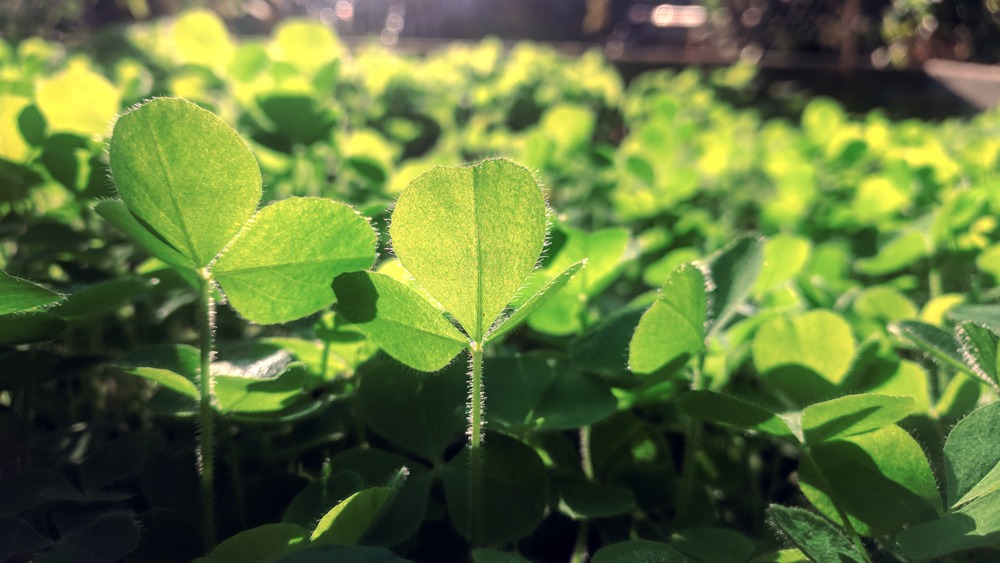Succession Success
When I started gardening, I used to think that whatever I planted will stay there for the entire season; in fact, I thought that all plants would last forever if it wasn’t for winter. I would blame myself whenever a plant died, attribute it to my black thumb, and then buy a new plant because the first one “failed”. I didn’t really consider the impermanence of plants, let alone their vastly different life spans.
The practice of Succession Planting succinctly captures this concept without the guilt and self-loathing. Successive plantings are possible because the first plant has lived out it’s full life cycle. A second crop can be started, not because the first one failed, but because it was never meant to last. A second planting is not cheating, it’s succession planting. Impermanence is not something to tolerate. It’s an opportunity to embrace.
In this post, I’ll show you how succession planting unlocks the full potential of your garden space by taking your garden to the 4th dimension.
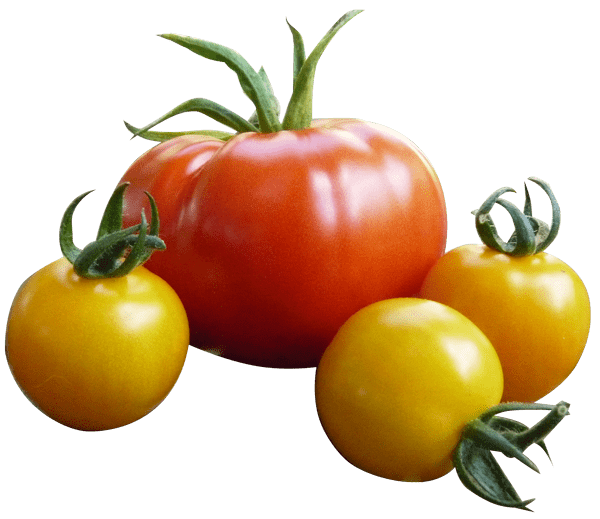
What is Succession Planting?
Planting in successions can take various forms including:
- Staggered plantings of the same crop to extend harvest periods
- Planting a new crop in the space where a previous crop has been harvested
- Intercropping or planting in the spaces between other plants
- Planting crops with different rates of maturity (ie. slow vs. fast growing tomatoes) to extend the period of harvesting
Succession planting is a mindset where you are looking for opportunities. There is a lot of room for creativity!

What to Succession Plant
Succession planting can refer to multiple sowings/plantings of the same crops or following with one crop after another. What you can succession plant largely depends on how long it takes for a certain plant to mature and how many consecutive frost free days we can expect in a year.
Here in zone 6, we have roughly 150 frost-free days per year, between May and October. That means when you read your radish seed packets that say “30 days to maturity”, you can expect 5 successions–maybe even 6 because they are cold-tolerant and don’t need to be confined within those 150 frost free days–if you plant them back to back to back to back to back. Of course, you’ll learn with experience that radishes bolt in the heat, so realistically you can do one succession in April, and another succession in September.
This chart from Urban Farmer gives a good idea of which plants can and cannot be used for succession planting in our plant hardiness zone.
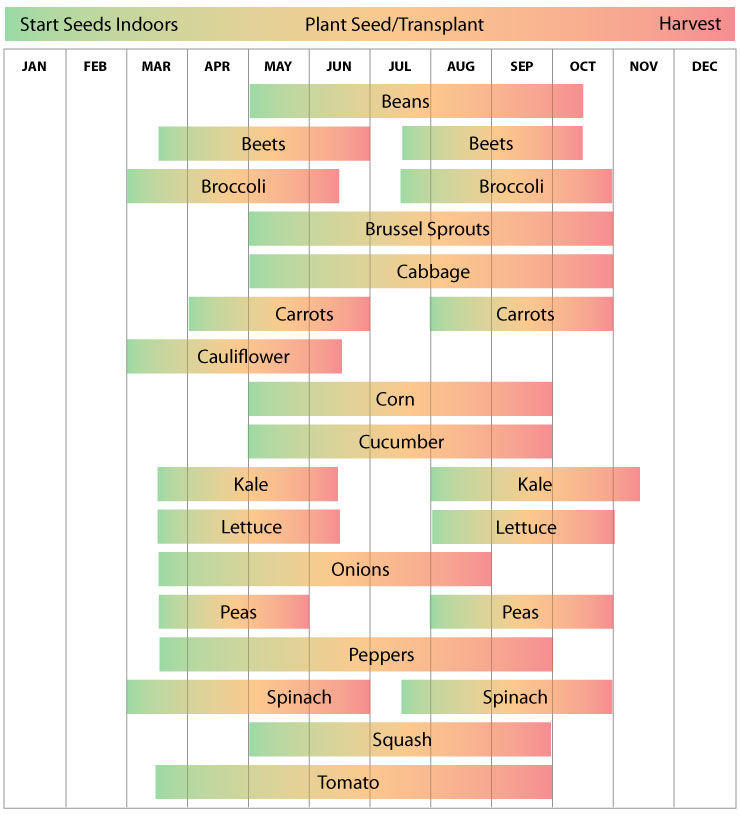
Our favourite candidates for succession planting are:
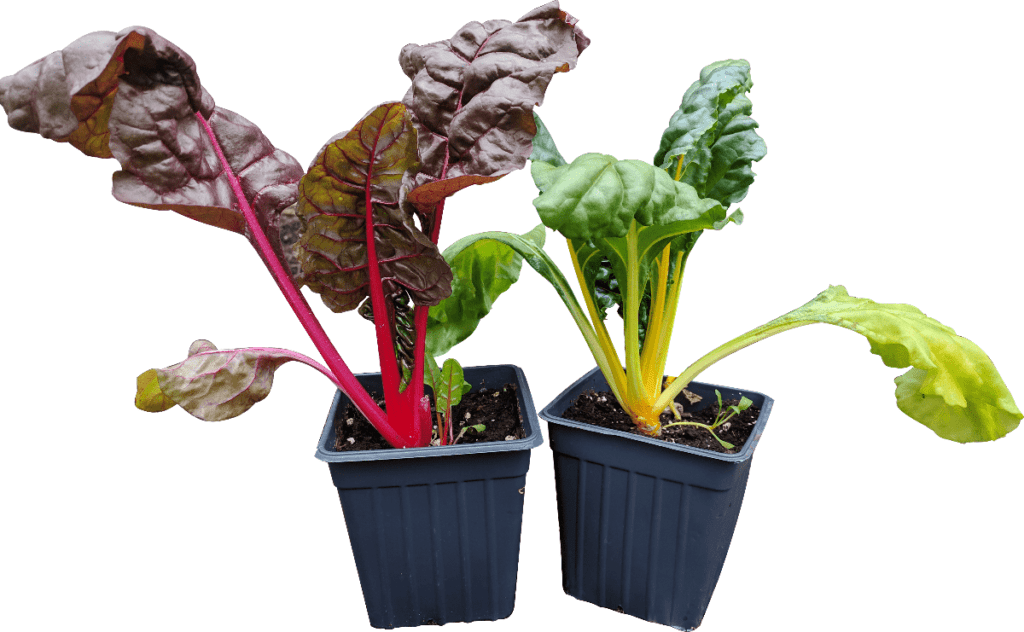
- Lettuce
- Spinach
- Kale
- Kohlrabi
- Collards
- Mustard
- Chard
- Bush beans
- Cilantro
- Beets
- Carrots
When to succession plant
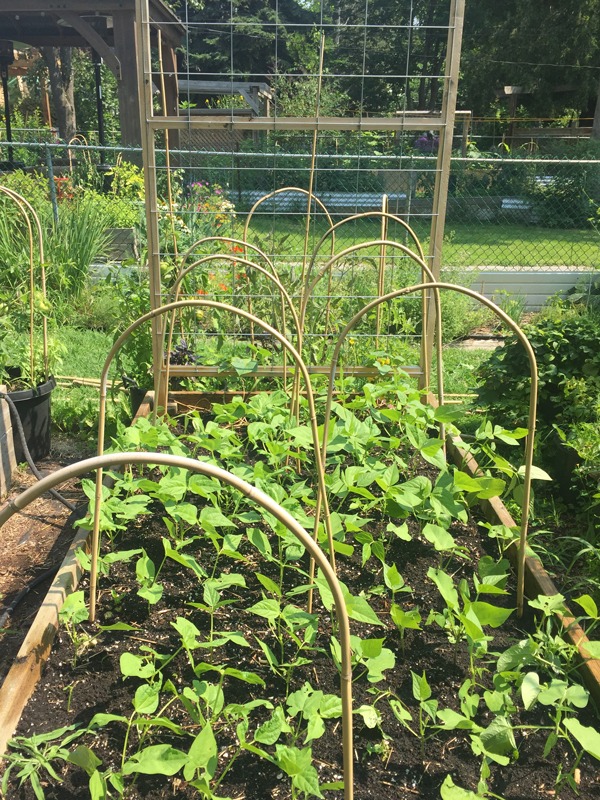
Succession planting is highly related to garden planning. If you aren’t familiar with garden planning, plant families, and plant spacing, I suggest reading Arlene’s blog post on the topic first.
Here are the common patterns of succession planting:
- April: Cold tolerant plants
- May: Heat loving plants after fast, cold tolerant plants
- Cucumbers after radish
- Tomatoes after overwintered rye
- June: Squash after greens after fast cold tolerant plants
- Zucchini after lettuce seedlings
- July-August: Cold tolerant plants after garlic or peas
- Kale after the garlic harvest
- Bush beans after peas have been harvested
- September-October: Over-winter crops
- Rye cover crop
- Garlic for next season
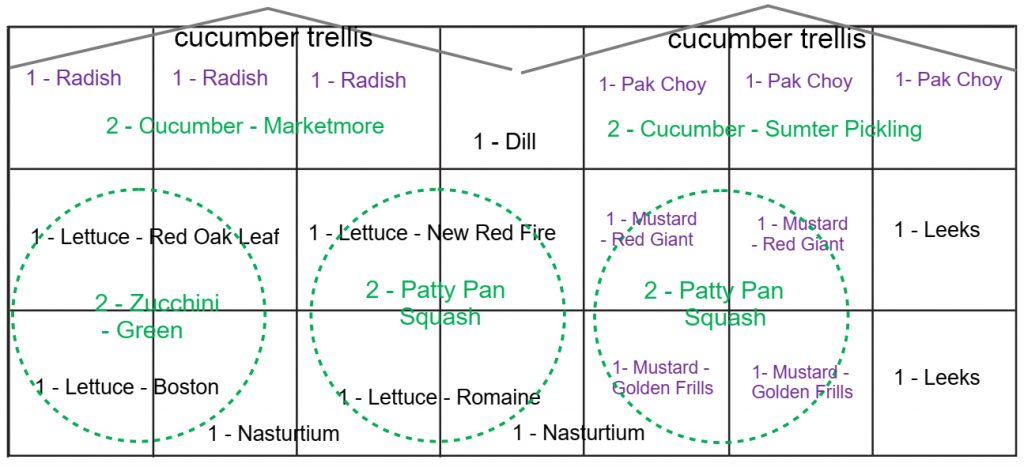
1 = Plant late April, 2 = Plant late May
Level up your Succession Planting
Sure, you can throw some new seeds in wherever new spaces are made available in your garden, but there are some other ways you can potentially squeeze more successions into your growing season.
Start Seedlings Indoors
If you have an existing indoor growing space for starting tomatoes in the winter, try starting new seedlings for succession planting. It’s a great way to use utilize your indoor grow space throughout the summer. You can rotate through the life cycle of more plants by replacing finished plants with plants that already have had a several-week head start indoors. Remember that seedlings started indoors will need to be hardened off before planting outside. See Arlene’s blog post for more how to start your own seedlings.
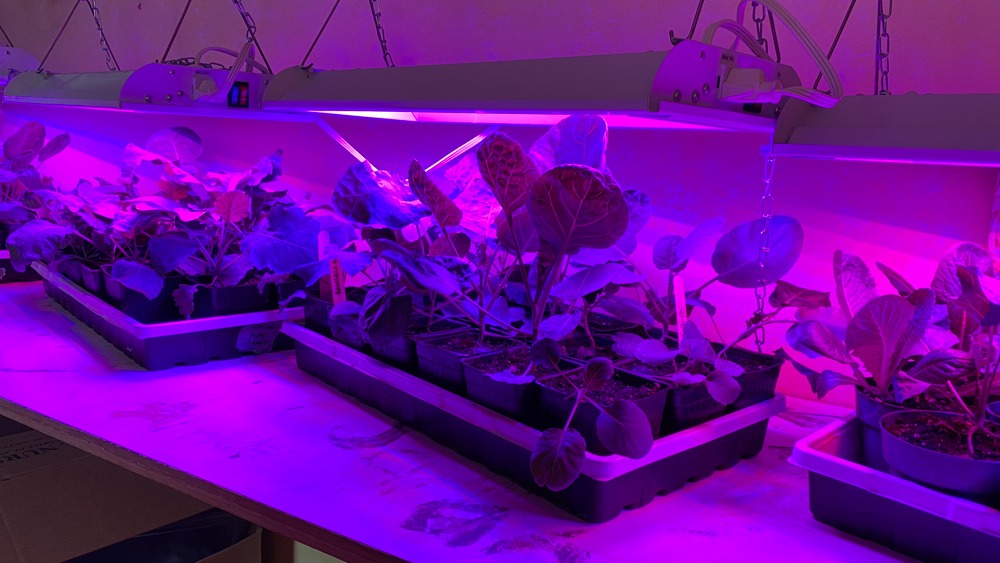
If you already have grow lights, why not make use of them all season long?
Under the canopy of older plants
If your second succession plant needs a bit of shade to start anyway, seeding them in the shade of existing plants is a great way to get a head start on your second succession. When the new plants need more light, thin out the old plants to let the new plants thrive.
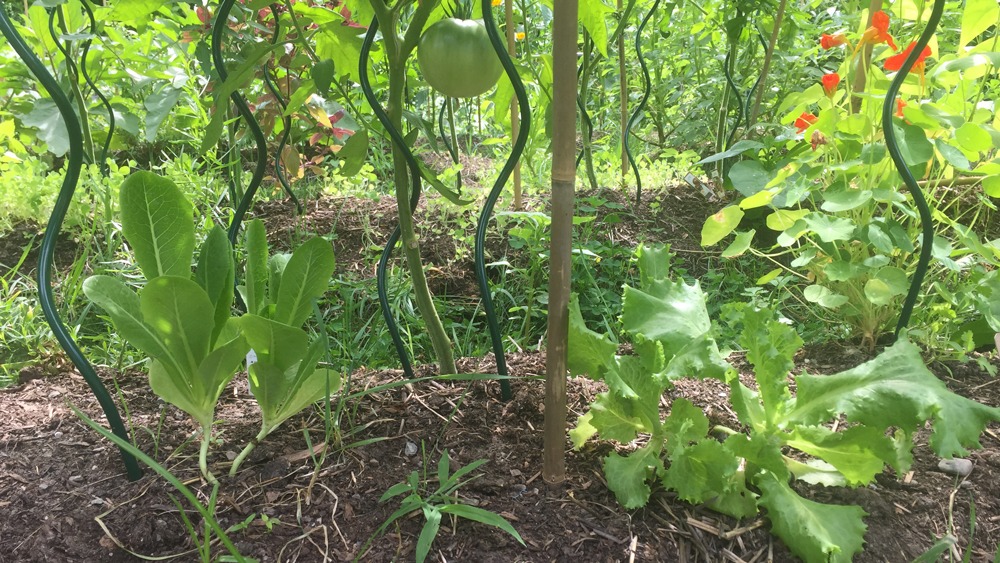
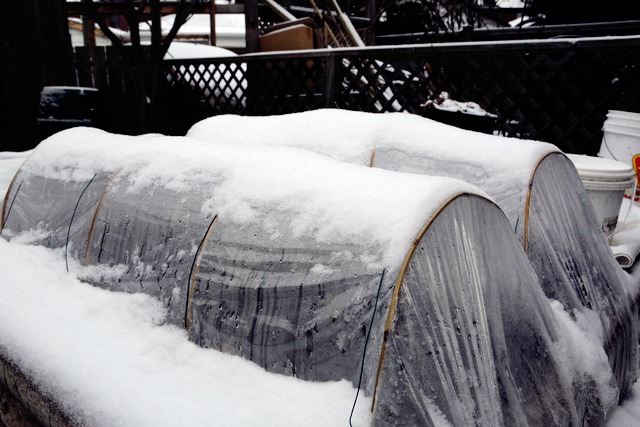
Use Season Extension
Cloches, hoop tunnels and cold frames can enable you to start your first succession as early as mid-April and your last succession as late as September.
Make use of seedlings and seeds
If you plant all your lettuces at once, you’ll have a lettuce boom when they need to be harvested simultaneously, followed by a lettuce bust when you have no more lettuces! You can control your lettuce harvest with different harvesting methods, or you can plant both seeds and seedlings simultaneously so plants mature at different times, with sown seeds lagging behind the pre-started seedlings, allowing for an extended period of harvest.
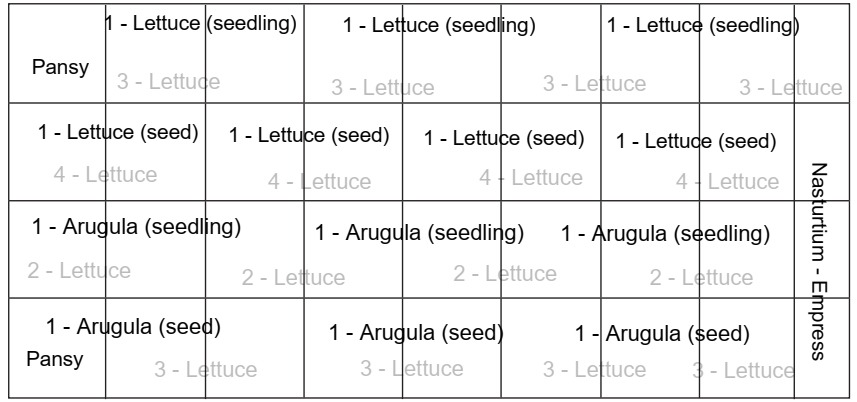
Note that actual maturity times are based on the weather and soil health, so while it’s good to have a plan, it’s also important to be flexible! Here, later successions of lettuce can be either seeds or seedlings depending on how fast the earlier successions finish.
Using seedlings also enables us to squeeze in a round of greens before we plant heat lovers in May. In the example below, if the first successions of arugula and spinach planted as seed (ie. somewhat behind in growth process as compared to seedlings), the tomatoes may have to be delayed (or maybe we’d just have arugula and spinach microgreens!)
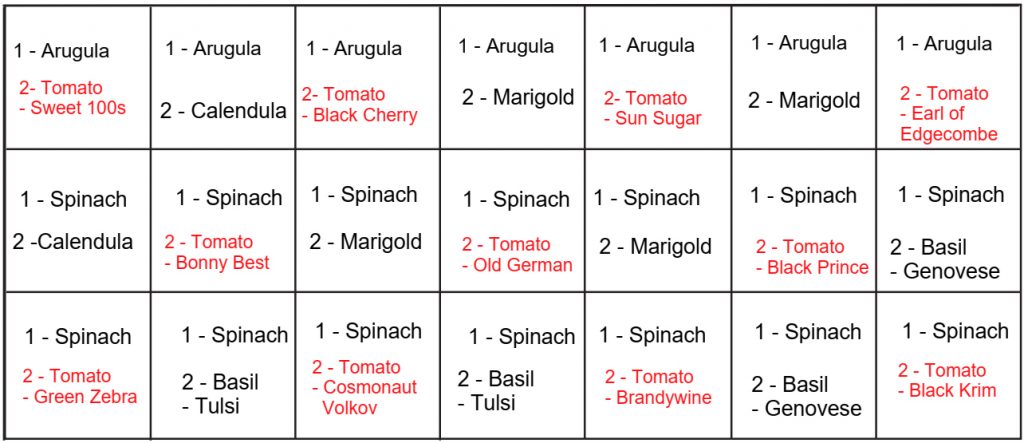
Include Cover Crops in your Succession Planting
If all this talk about optimizing time and extracting last every bit of productivity out of your garden is making succession planting sound like the gardening-industrial complex, consider that veggies are not the only things you can succession plant!
Succession planting with cover crops is a great way to give back to the soil and prepare for a new season of gardening. For example, you can seed rye under the canopy of tomatoes in September, and the rye roots will keep the nutrients in the soil once the frost kills the tomatoes. You can seed and chop three consecutive successions of buckwheat cover crop over a season as a low-cost method to prepare a new in-ground garden for the following year.
Whether cover crops are part of your succession planting or not, it’s important to feed your soil between successions. Don’t exploit your soils microbes by expecting too much of them without giving them occasional boosts—they’re the real farmers!
